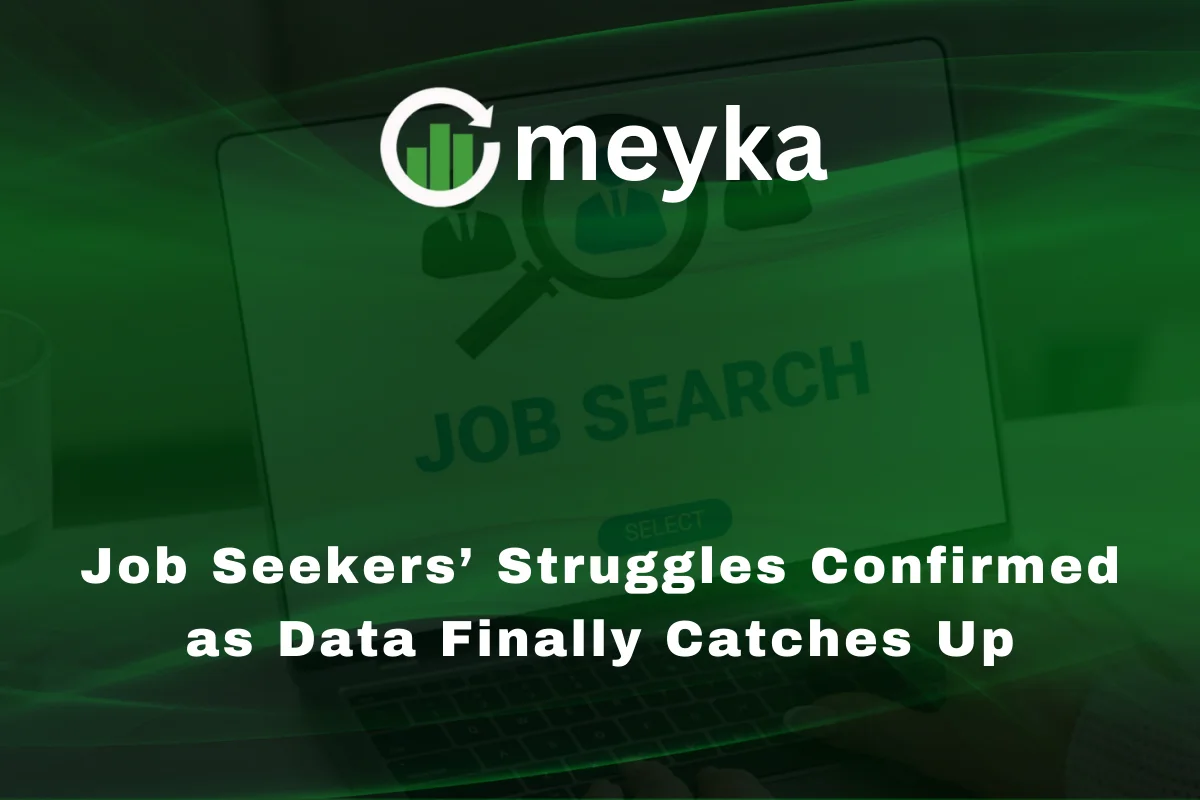Job Seekers’ Struggles Confirmed as Data Finally Catches Up
The reality of today’s labor market has never been clearer. Job seekers are experiencing some of the toughest conditions in years, and new data is finally explaining why so many feel left behind. Despite headlines suggesting steady growth, the lived experiences of applicants reveal a very different story.
The gap between what companies report and what individuals face continues to widen, creating frustration, instability, and uncertainty.
The Harsh Reality Facing Job Seekers Today
For months, many job seekers have spoken of a challenging environment: applications going unanswered, interviews leading nowhere, and a sense of stagnation. The latest reports confirm that while job postings still exist, opportunities are becoming harder to land. Rejections are rising, and the competition has intensified.
A recent survey revealed that confidence among job hunters has fallen sharply. Many candidates feel awful about the labor market, even though unemployment numbers appear stable on the surface. This paradox highlights a deeper issue: traditional metrics fail to capture the real experiences of those in transition.
Why Job Market Data is Misleading
The labor market has often been measured by unemployment rates and payroll numbers. While these indicators suggest stability, they don’t reflect the difficulty of actually securing employment. For job seekers, the process feels very different.
For example, the number of available jobs might seem strong, but a closer look shows that many listings remain unfilled or are “ghost jobs”, positions posted without immediate intention to hire. At the same time, layoffs in industries like technology and finance add more candidates to the pool, creating a flood of competition.
Even sectors experiencing growth are not immune. Retail, healthcare, and education continue to hire, but wages are not keeping pace with inflation. As a result, candidates may secure jobs but still struggle financially, fueling more dissatisfaction.
The Emotional Toll on Job Seekers
Beyond the statistics, the emotional weight of job hunting is mounting. Long periods of searching can erode confidence, and constant rejection often leads to feelings of discouragement. Many job seekers report high levels of stress and burnout, especially as application processes become more automated and less personal.
Artificial intelligence screening tools are now widely used by employers, but they add a new layer of complexity. Resumes may be filtered out before a human ever reviews them, leaving qualified individuals without opportunities. This shift increases the perception that the system is unfair and stacked against everyday applicants.
Economic Forces Driving the Struggles
Several economic dynamics contribute to this environment. High interest rates continue to slow expansion, and many companies remain cautious about hiring. The stock market reflects this uncertainty, with investors closely watching for signs of stability before companies commit to growth.
At the same time, corporate focus has shifted to cost management and efficiency. Investment in AI stocks and automation shows where employers are heading. While technology may create new roles in the long term, it is currently displacing traditional positions, leaving gaps for those who lack technical skills.
The Growing Divide Between Skills and Jobs
Another challenge for job seekers is the mismatch between their skills and what companies demand. Employers are seeking highly specialized abilities, especially in digital technology, cybersecurity, and data science. Those with traditional backgrounds may find themselves excluded.
Even when training opportunities exist, the pace of change is overwhelming. Job hunters are caught in a race to upskill while balancing financial pressures. Without accessible and affordable pathways to new careers, many remain stuck in cycles of low-wage or unstable work.
How Job Seekers Can Adapt in a Shifting Market
Despite the struggles, some strategies can help. Experts recommend tailoring applications to each role, emphasizing measurable achievements, and building digital skills. Networking remains critical, as many opportunities never appear on public job boards.
Another key is persistence. The hiring process is longer and more complex than before, but consistent effort pays off. Job seekers who adapt quickly to market changes, whether by learning new tools, exploring freelance opportunities, or considering alternative industries, stand a better chance of success.
For those exploring investment alongside job hunting, keeping an eye on trends in stock research can provide insights. Watching where companies direct resources, such as technology, renewable energy, or healthcare, may indicate where future job growth will occur.
The Outlook Ahead
The labor market is unlikely to normalize overnight. As technology reshapes industries and economic uncertainty lingers, job seekers must prepare for continued challenges. However, history shows resilience. New opportunities will emerge, often in unexpected areas, and those who remain adaptable will benefit.
Policymakers and companies also carry responsibility. Improving wage structures, investing in training, and providing more transparent hiring practices can ease the pressure on individuals. Bridging the gap between statistics and real experiences is essential to restoring confidence in the market.
Conclusion
The struggles of job seekers are no longer hidden behind rosy headlines. Data has finally caught up to what many already knew: the job market is tough, competitive, and deeply frustrating. While structural challenges remain, adapting skills, staying persistent, and leveraging the right opportunities can make a difference.
The labor market is in transition, and those who navigate its complexities with resilience will define the workforce of tomorrow.
FAQs
Unemployment rates do not capture the difficulty of securing roles, the rise of ghost job postings, or the mismatch between available jobs and required skills.
AI streamlines hiring for companies but often screens out qualified candidates before a human review. This makes the process harder and less personal for applicants.
Healthcare, renewable energy, and technology remain strong, but competition is high. Networking and skill development are key to breaking in.
Disclaimer:
This content is made for learning only. It is not meant to give financial advice. Always check the facts yourself. Financial decisions need detailed research.






